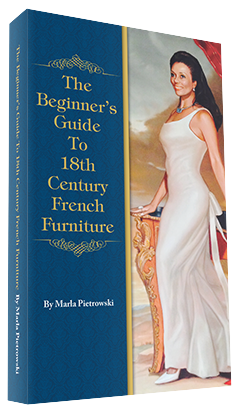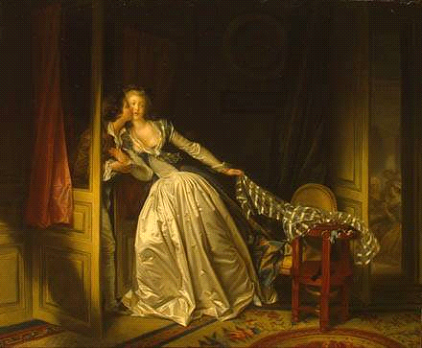
Vision
To be the leading organization in sustaining an appreciation for items of fine and decorative art created by master craftsmen.
Mission Statement
The "True Renaissance" mission is to promote educational learning in our schools and communities through the artistic creations, skills and techniques of master craftsmen by providing enriching experiences and accessibility to fine and decorative art typically held at the world's finest museums.

Marla Pietrowski Founder and Executive Director
Ms. Pietrowski's passion for fine and decorative art and her desire to share the wealth of knowledge gleaned from more than two decades of experience as a lecturer on European decorative art
is the inspiration for the formation of True Renaissance. She is an avid collector of French decorative art and has written her first book on the subject,
"The Beginner's Guide to 18th Century French Decorative Art," which will be published this year. Ms. Pietrowski is from the United States but in London for a number
of years and studied European art at Sotheby's Institute of Art. More recently she worked for Christie's in Geneva. She holds a Bachelor of Art in Education,
and a Master of Science in Organization Development. She also holds a professional certificate in European Styles of Art and Art History.
Her professional qualifications and expertise have been forged through experiences in various sectors including education, national and international business and decorative arts.
She has a passion for French decorative art and has volunteered in  Washington, D.C. at the Hillwood Museum and Gardens.
More recently, and in connection with this True Renaissance,
Ms. Pietrowski has returned to the United States and is presently residing in New Jersey. She is employed as an adjunct professor at Wilmington University where she teaches classes
in organizational development and strategic management.
Washington, D.C. at the Hillwood Museum and Gardens.
More recently, and in connection with this True Renaissance,
Ms. Pietrowski has returned to the United States and is presently residing in New Jersey. She is employed as an adjunct professor at Wilmington University where she teaches classes
in organizational development and strategic management.
Historical Context
Today, relevance of France and the Renaissance Period can be attributed to the many styles of artistic design that have evolved from France, Italy and other artistic areas in Europe. However, when we consider 18th century France as it relates to art, we must also consider the context in which this art was created. Louis XIV, the originator of the French style, established the elegance and quality commonly associated with furniture of this period. His design concepts were later refined in the 18th century by Louis XV and Louis XVI. During this period the predilections of the aristocracy and the wealthy prevailed, giving rise to a society of grandeur and indulgence, of eroticism and sensuality, of superb intellect and creativity. The individuals of upper society were prepared to spare no expense in creating items of interest for their personal pleasure. Whereas in earlier periods only the king and court could afford the expense of such an extravagant life style, by mid 18th century we had extremely wealthy families, such as the Rothschild's, who were financially able and willing to spend exorbitantly to acquire items that appeased their personal preference and style. This was reflected by the extravagant items that they commissioned, regardless of cost, for their smaller but magnificent mansions.
The Grand Tour
Many wealthy Americans were introduced to European design during the latter half of the 19th century and early part of the 20th century when it became customary for them to take the "grand tour." This aspect of travel had been a common practice for Europeans centuries before. The grand tour involved an extended period of holiday abroad where one would visit cities such as Paris, Rome, London, and Venice to experience cultural sights firsthand. While traveling, one was expected to educate oneself on the finer elements of culture and art. This new found knowledge was reflected in the souvenirs and other items acquired while traveling. Items, which were created in France, were popular choices because of their exquisite craftsmanship. The "collector's cabinet" or "curio cabinet" is an item of French furniture created hundreds of years ago specifically for the purpose of displaying miniature collectibles of these kind. Items often included fine artistic creations by such master artists such as François Boucher and Jean-Honoré Fragonard.

Fragonard demonstrates his mastery of light and shade. The fabrics are rendered in complete detail, each fold of the glistening silk, and the transparency of the scarf are reminiscent of the effects of a modern day camera lens instead of the strokes of a paint brush. This painting also tells a speculative story about a relationship. It also gives the viewer an opportunity to peek inside the home of a wealthy or an aristocratic family to gain a glimpse about furniture selection and style.



